The human face of Australia’s rental crisis was revealed this year when father of three Morgan Cox bravely fronted ABC’s Q&A seeking answers to Australia’s rental crisis.
Morgan Cox is a typical hardworking Australian living on the NSW Central Coast. He works two jobs to help support his partner and three children, one of whom is under the age of two.
Cox’s household received a $10,000 annual rent hike. He is unable to find another reasonable rental home and risks homelessness if rents continue to rise.
Shortly before appearing on Q&A, CoreLogic (now Cotality) data showed that rental affordability was at a record low, with the median household required to spend 33% of income to rent the median home.
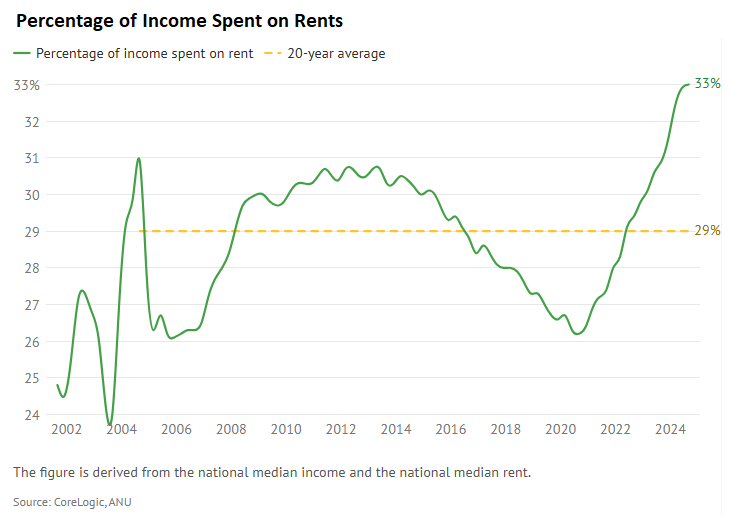
This week, Cotality released its Quarterly Rental Review, which showed that rents have increased by 43% nationally over the past five years:
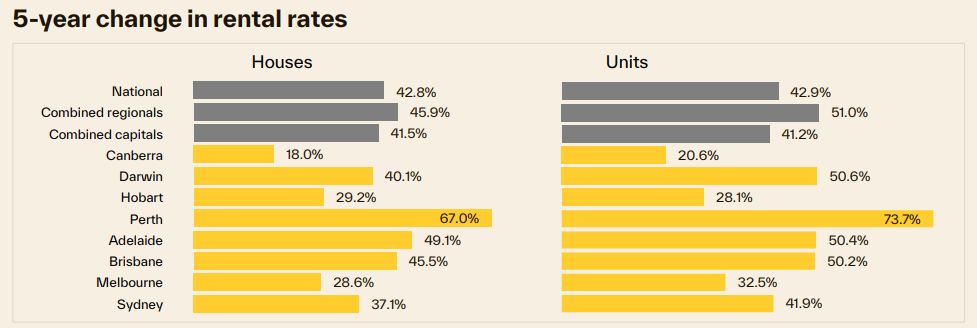
Source: Cotality
As a result, the national median weekly rent has risen by nearly $200 to $665 per week, adding $10,350 per year to the median rent.
Cotality noted that there were only around 100,000 rental listings nationally in Q2, roughly 23% below the previous five-year average, or approximately 29,000 fewer listings than usual for this time of year.
Cotality Economist Kaytlin Ezzy commented that “the shortfall in rental listings has seen the national vacancy rate slip to 1.6% in June, only slightly above the record lows seen in early 2024 (1.5%), and less than half the pre-COVID decade average of 3.3%”.
The rental vacancy rate is plotted below by Justin Fabo from Antipodean Macro:
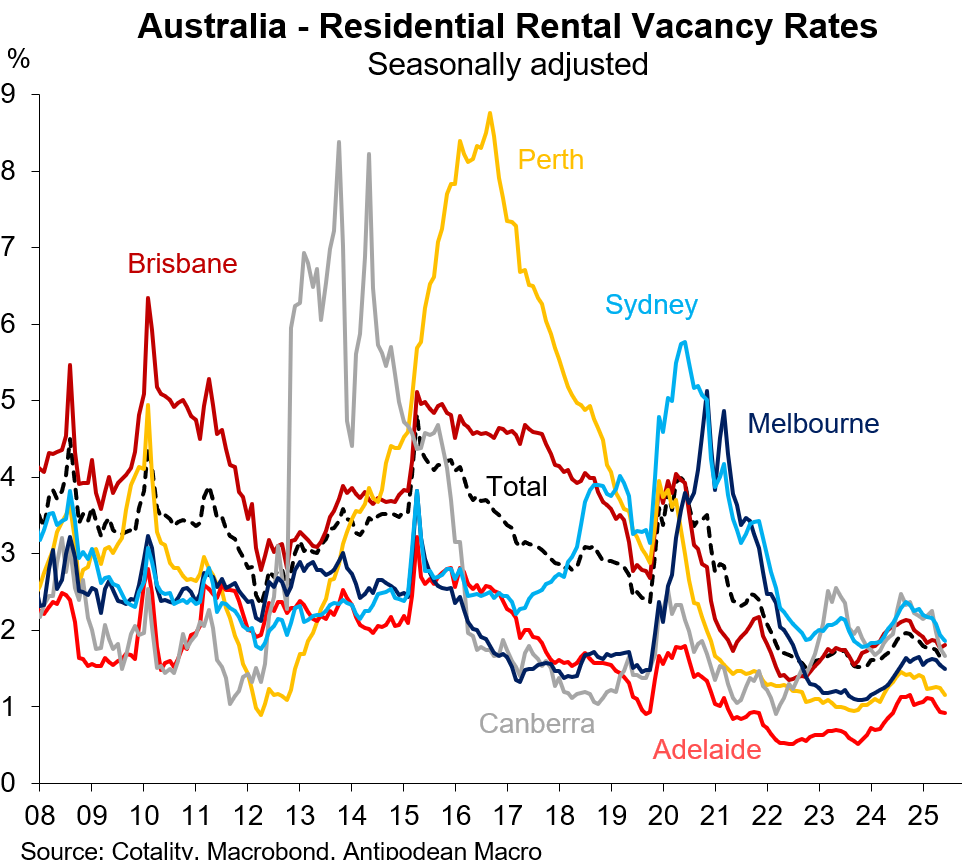
The only good news is that the rate of growth in asking rents has moderated from 1.7% in Q1 to 1.3% over Q2, marking the lowest second-quarter increase since 2020.
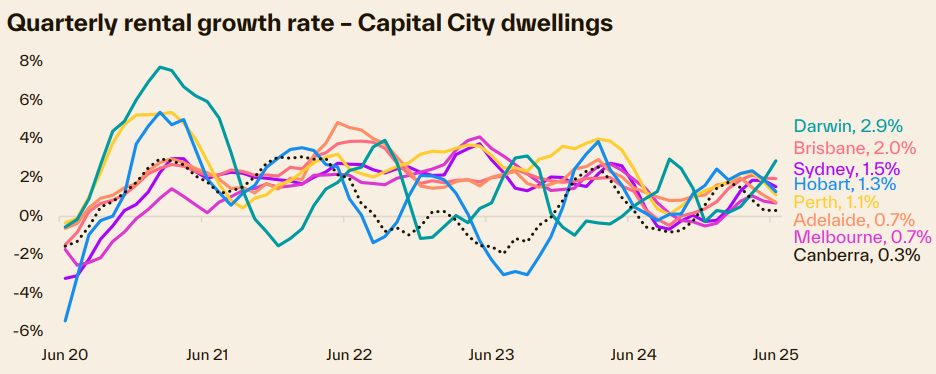
Source: Cotality
“The slowdown in rental growth instead continues to be driven by a tempering in demand, with the normalisation of net overseas migration and a rise in average household size helping to dampen rental demand”, Ezzy noted.
“Considering wages, as measured by the ABS wage price index, are up less than half this rate (15.8%) over the five years to March 2025, it’s no wonder household formation trends are skewing larger as a way of spreading out the additional rental cost”.
The latest monthly data on permanent and long-term arrivals suggests that net overseas migration may have reaccelerated.
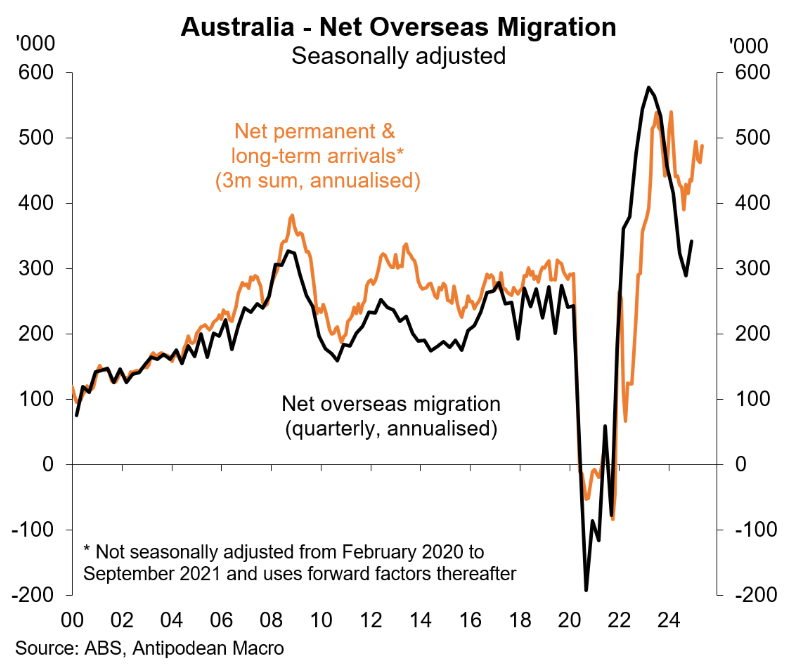
This helps to explain the recent tightening of rental vacancies, which may result in a reacceleration of rental growth.

